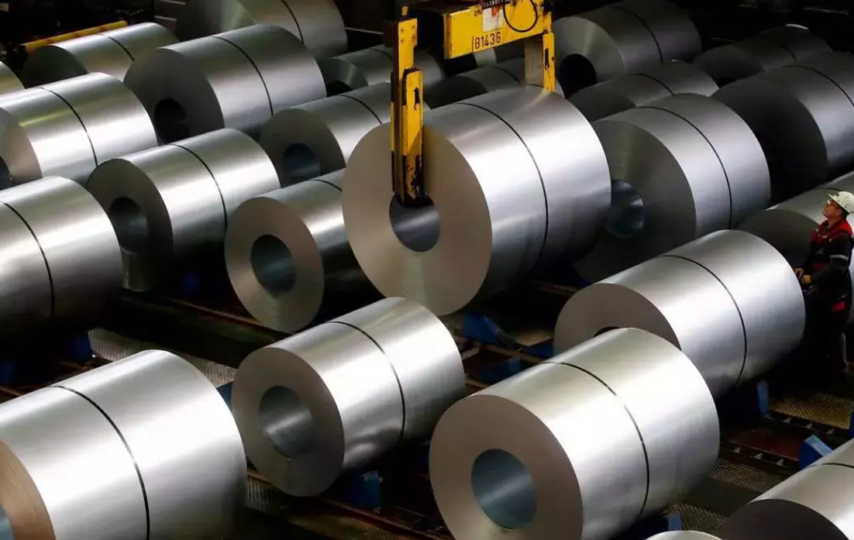Introduction to Steel 2.0
Steel, the building block of modern infrastructure, is undergoing a revolutionary change due to the application of nanotechnology. Introducing ‘Steel 2.0’ – where nanoscale engineering gives incredible potential. The results of this transformation are unmatched – the strength of steel can withstand massive loads without buckling- and featherweight performance – lighter steels are being manufactued without comprising structural integrity. Steel 2.0 innovations also include an emphasis on environmental conscience, reducing energy usage and waste throughout the steel production cycle, and unwavering resilience with greater corrosion resistance for longer lifespans. Furthermore, according to a recent analysis by The Hindu Businessline, the demand is likely to rise over the previous year.
Steel’s Nanotech Advancements
Nanotechnology is helping to advance steel development in a variety of areas. The discovery of nanoparticles has significantly advanced the production of alloys, producing new alloys with remarkable strength-to-weight ratios and characteristics suited to applications. Nanostructured steels are gaining popularity due to their ability to modify the internal structure of steel at the nanoscale, providing unparallel strength and resistance to wear. Research on surface modification techniques. Which coat steel with incredibly thin nanocoatings to improve friction, shield it from harsh environments, and even allow it to self-heal, is another vital field. Also being developed are composite steel materials, which are created by fusing nanoparicles with a steel matrix to create materials with special qualities like increased conductivity or durability.
New Developments in the Steel Industry
Steel production is undergoing changes due to nanotech. Steel additive manufacturing, also referred to as 3D printing, creates intricate forms and minimizes waste by producing complex steel components straight from digital models. Thanks to modern processing techniques that produce optimal microstructures that result in improved performance, precise control over steel manufacture at the nanoscale is achievable.
In addition to emphasizing sustainable steel production, nanotech is being used to maximize energy efficiency, reduce emissions and improve steel’s recyclable nature.
Revolution in the Construction Sector
Scanning the effects of steel in the construction industry, we have :
Stronger, Safer Structures: Taller skyscrapers, longer bridges and infrastructure resistant to earthquakes are made possible by high-strength nanostructured steels and TMT bars.
By making steel components lighter, building can save material costs and increase energy efficiency in construction and related operations. This is known as “Lightweighting for efficiency”.
Advanced Corrosion Protection: Nano-coatings provide a strong defense against rust and decay in harsh conditions, reducing the need for maintenance and extending the life of buildings.
The Revolutionalizd change in Aerospace Engineering
Pushing Weight Limits: Extremely strong, ultra-light steel alloys enable larger aircraft and spacecraft with bigger cargo capacity or longer range.
Tolerating Severe Conditions: Specialized nanostructured steels are resistant to extreme temperature fluctuations, pressure, and radiation in space applications.
Component Optimization: Additive printing and production allow for intricate aerospace parts with better geometrics that are lighter and more useful.
Steel’s Potential Application in Nanotech
The utilization of innovative materials and the rise in steel production make this field very promising.
Consider “smart steel” as steels with sensors built in to check the building’s structural integrity or self-heal damage.
Steel that are Bio-Compatible : Steel that has been nanotextured provides improved implant and device integration
Pushing the boundaries of Green Steel : In the future, nanotech may allow for even more resource and emission efficient steel production.
Conclusion
This nanotech driven breakthrough represents a significant milestone in the pursuit of sustainable steel manufacturing. The prospect of being able to lower emissions while enhancing efficiency highlights nanotech’s ability to disrupt established sectors. As researchers work to bring this solution to market, we can envision a future in which the steel that supports our infrastructure has a considerably lower environmental effect.
FAQs
What is nanotechnology, and how does it apply to steel?
Nanotechnology is the manipulation of matter at the atomic and molecular scale (one billionth of a meter). In steel, it enables the creation of new alloys, coatings, and manufacturing processes with unprecedented precision.
What are the primary benefits of nanotechnology in steel?
Stronger, lighter, more durable, and corrosion-resistant steels, plus greater efficiency and sustainability in production.
Which industries are experiencing the most significant impact from Steel 2.0?
Construction, aerospace, automotive, energy, and defense sectors are at the forefront of this revolution.
How will nanotechnology improve safety in the construction industry?
High-strength, lightweight nanostructured steels and TMT bars enable more robust and earthquake-resistant structures. Advanced coatings protect against corrosion, ensuring the long-term integrity of buildings and bridges.
What are the environmental implications of Steel 2.0?
Nanotechnology contributes to “greener” steel production. Processes become more energy-efficient, emissions are reduced, and nanostructured steels help create lighter, more fuel-efficient vehicles and structures.
———– Author details—————
Unnati Parkar
Unnati Parkar is a passionate blogger with hands on experience in covering jargon steel manufacturing industrial updates, Indian government schemes, policies and the Indian Industrial ecosystem. She gets to curate content in various forms for the Interest of MSMEs, start-ups and finance professionals.








